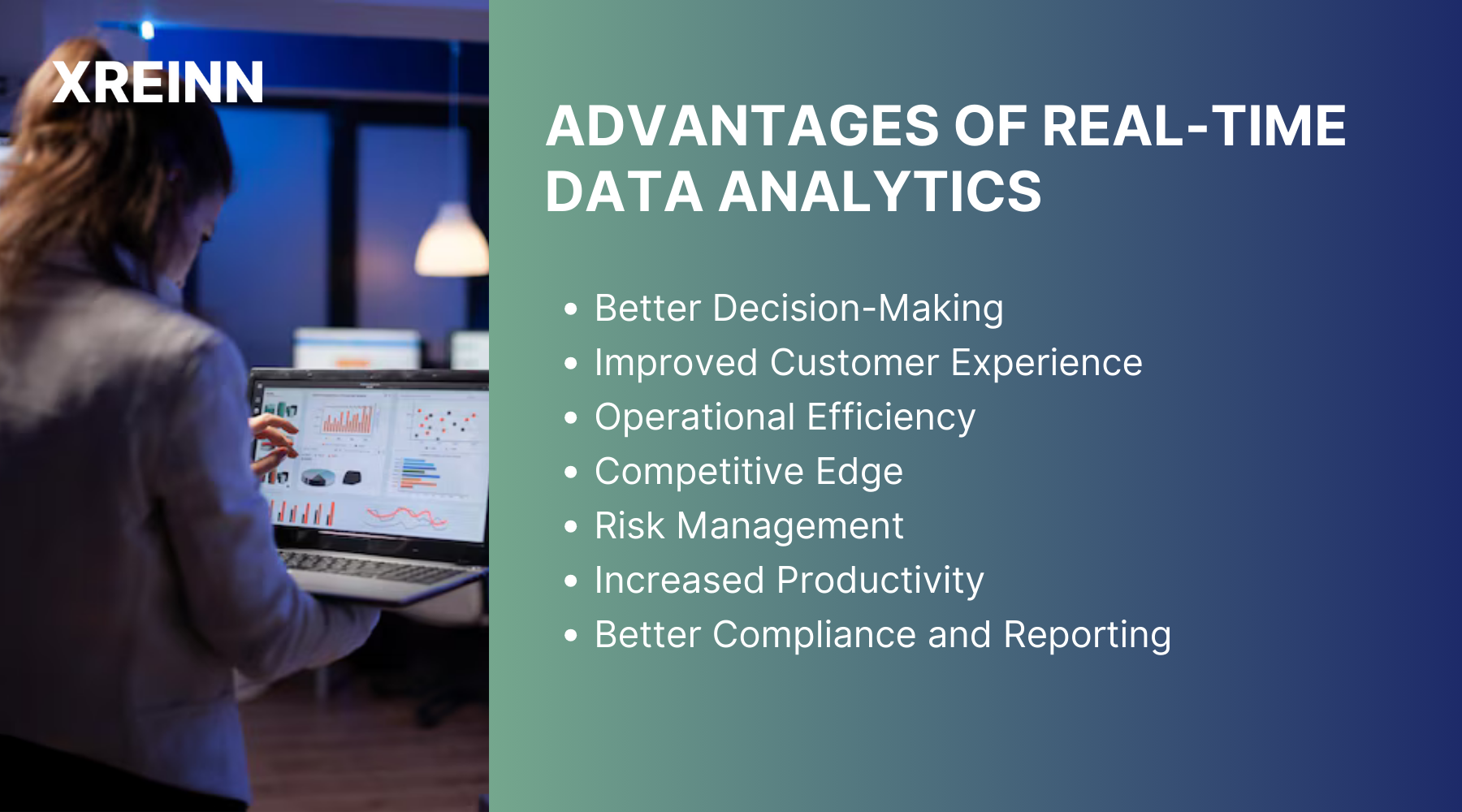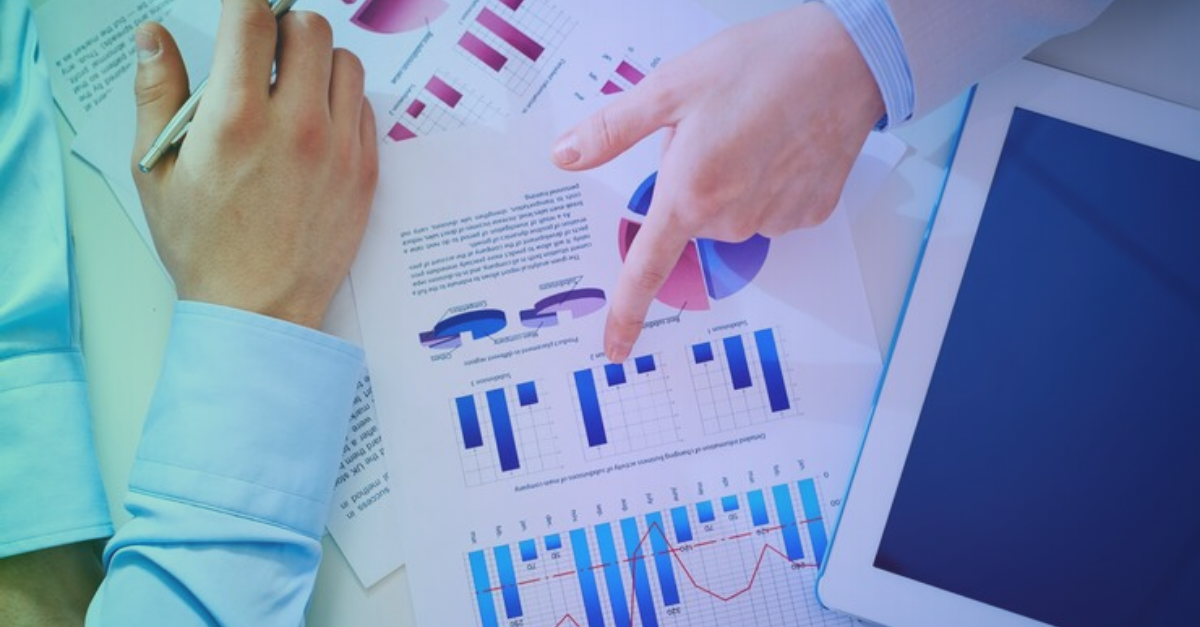Data Analytics
Grow your Business with Real-Time Data Analytics: A Complete Guide
Jul 10, 2024
Grow your Business with Real-Time Data Analytics: A Complete Guide
Every day, you make countless decisions that contribute to a growing stream of data. Businesses use this data to shape their products and services and understand customer needs. In the past, predicting the future based on historical data was challenging. Real-time data analytics changes this by allowing you to analyze data as it is generated, providing immediate insights that guide your actions.
This guide will help you see how real-time data analytics can benefit your organization, especially if you run a small or medium-sized enterprise (SME).
What is Real-Time Data Analytics?
Real-time data analytics involves analyzing data as soon as it enters your system. This lets you see and use information immediately. It processes data from fast-moving sources like the Internet of Things (IoT), mobile devices, sensors, and online interactions. This can significantly impact business decisions by providing current insights.
For example, banks use real-time analytics to detect fraudulent transactions instantly, while retailers manage their inventory better by monitoring sales data in real time.
Why Use Real-Time Data in Analytics?
Real-time data gives you almost instant information, unlike other data types that have delays. This quick access allows teams to act strategically, report issues to leaders immediately, and respond faster.
With real-time data, teams can:
1. Make decisions and apply them to ongoing processes immediately.
2. Monitor the effectiveness of predictive or prescriptive models in real time.
3. Compare past data with current data for better insights.
4. Get alerts from monitored systems to respond quickly to issues.
Examples of Real-Time Data Analytics
Real-time data analytics can be used in many ways across different industries. Here are some examples:
Account Monitoring
Credit card companies use real-time data to watch accounts and spot fraud. If a transaction seems unusual, it can be flagged, and the account can be restricted immediately. This stops unauthorized transactions and keeps customers' financial information safe.
System Security
Businesses use real-time analytics to enhance cybersecurity. By monitoring data access in real-time, any uncertain activity can be seen and addressed immediately to prevent data breaches. This helps keep sensitive information secure and maintains customer trust.
Predictive Maintenance
Companies with large fleets, like airlines or logistics firms, use real-time data to predict when machines might fail. This allows them to do maintenance before a breakdown happens, saving costs and reducing downtime. Real-time monitoring of equipment health ensures smooth operations and safety.
Advantages of Real-Time Data Analytics

Real-time data analytics offers many benefits that can change the way businesses work. Here’s how:
Better Decision-Making
Having immediate access to data lets you make quick and informed decisions. For example, a store can adjust prices based on real-time sales data, boosting revenue and managing inventory. By seeing sales trends right away, a store can lower prices on slow-moving items or raise prices on high-demand items to increase profits. This flexibility allows businesses to respond quickly to market conditions and customer behavior, leading to smarter decisions.
Improved Customer Experience
Real-time insights help personalize customer interactions, increasing satisfaction and loyalty. Online stores can recommend products based on what customers are currently browsing, improving the shopping experience. For instance, if a customer often looks at athletic wear, the store can show new arrivals or ongoing promotions in that category. This level of personalization makes customers feel valued and understood, encouraging repeat business and positive word-of-mouth.
Operational Efficiency
Real-time monitoring helps find and fix inefficiencies right away. Factories can adjust production lines based on real-time performance data, optimizing output and reducing waste. For example, if a sensor detects a slowdown in a production line, managers can act quickly to fix the issue, minimizing downtime. Additionally, real-time data can help with predictive maintenance, where machine health is watched continuously, and maintenance is scheduled before a breakdown, avoiding costly disruptions.
Competitive Edge
Responding faster to market trends and customer needs gives you a big advantage. Companies can launch targeted marketing campaigns based on real-time social media trends, capturing market opportunities quickly. For example, if a product becomes popular on social media, a company can increase production and launch marketing campaigns to boost sales. This proactive approach keeps businesses relevant and responsive in a dynamic market.
Risk Management
Real-time data analytics helps improve risk management by providing up-to-date information that can stop problems before they start. For example, banks use real-time data to monitor transactions for signs of fraud. If a questionable transaction is detected, it can be marked and checked immediately, reducing the risk of major financial loss. In the same way, real-time tracking of shipments in supply chain management can identify and handle risks like delays or damages, ensuring smooth operations
Increased Productivity
With real-time data analytics, employees can focus on more important tasks rather than routine data analysis. Automated systems handle data collection and analysis, freeing up staff for work that needs critical thinking and creativity. This not only boosts productivity but also improves job satisfaction as employees do more meaningful work.
Better Compliance and Reporting
Real-time data analytics ensures that businesses meet industry regulations by providing timely and accurate data for reporting. For instance, healthcare providers can use real-time analytics to ensure patient data is handled in line with privacy rules. This is crucial in industries with strict regulations where non-compliance can lead to severe penalties.
How Real-Time Data Analytics Transforms Businesses
Marketing
Real-time data analytics lets marketers adjust campaigns quickly. By watching customer interactions and feedback in real-time, marketers can tweak their strategies to improve engagement and conversion rates. For example, if an ad isn't performing well, it can change its content or targeting to make it more effective. This flexibility helps maximize the return on marketing investments and keeps campaigns relevant.
Supply Chain Management
Real-time analytics helps businesses manage their supply chains better. They can track shipments, manage inventory levels, and predict supply chain disruptions before they happen, ensuring smooth operations. This proactive approach minimizes delays and optimizes inventory management, reducing the risk of stockouts or overstock situations. As a result, businesses can maintain high service levels and customer satisfaction.
Healthcare
In healthcare, real-time data analytics can monitor patient vitals and predict potential health issues. This allows timely interventions, improving patient outcomes and reducing healthcare costs. For example, wearable devices can send patient data to healthcare providers, who can then spot and address issues like irregular heartbeats or high blood pressure right away. This continuous monitoring improves the quality of care and can prevent serious medical problems.
Finance
Financial institutions use real-time analytics to manage risk and compliance. They can spot unusual transactions and prevent fraud, ensuring the security of financial systems. By analyzing transaction patterns in real-time, banks can identify suspicious activities and take immediate action, such as freezing accounts or notifying authorities. This not only protects the institution and its customers but also maintains regulatory compliance and trust in the financial system.
Conclusion
Real-time data analytics is changing how businesses work by providing instant insights that lead to better decisions and greater efficiency. Whether it's improving marketing strategies, optimizing supply chains, enhancing healthcare outcomes, or securing financial transactions, real-time analytics helps businesses stay agile and responsive.
By using real-time data analytics in your operations, you can gain a competitive edge, improve customer satisfaction, and drive your business toward success. Maintaining competitive advantage in a fast-changing market requires real-time data analytics.

Data Analytics
Jun 27, 2024Master key concepts in data analytics with practical tips to enhance decision-making and achieve success in your projects and professional growth

Data Analytics
Jul 01, 2024Learn the essential stages of the data analytics workflow to turn your data into valuable business insights and drive growth.

